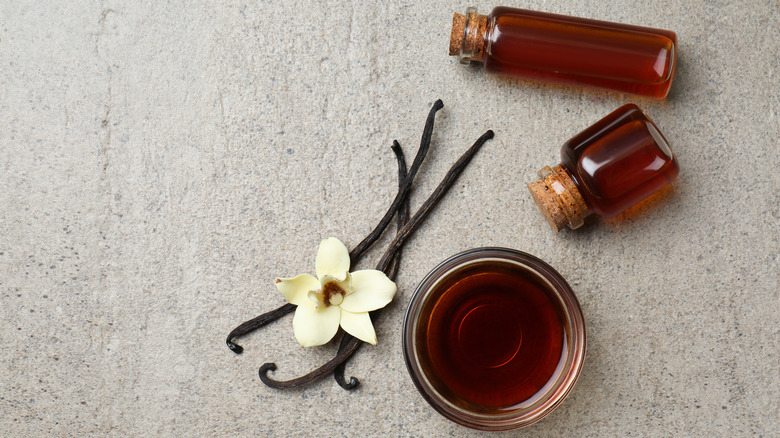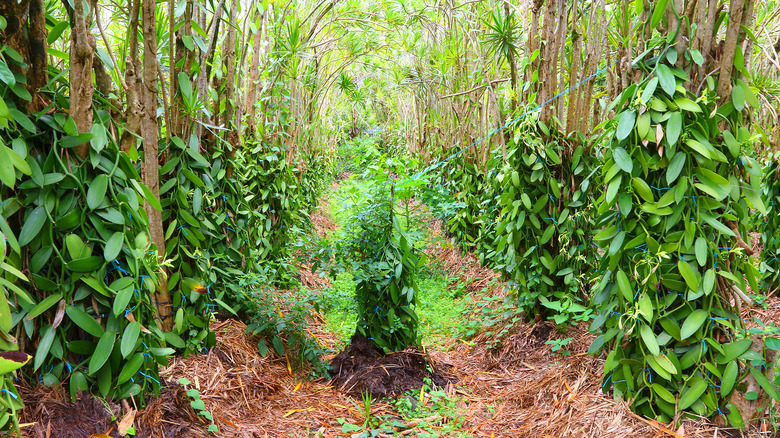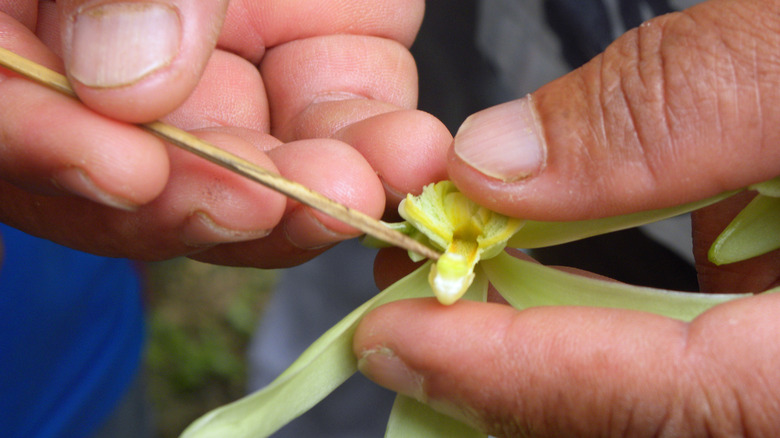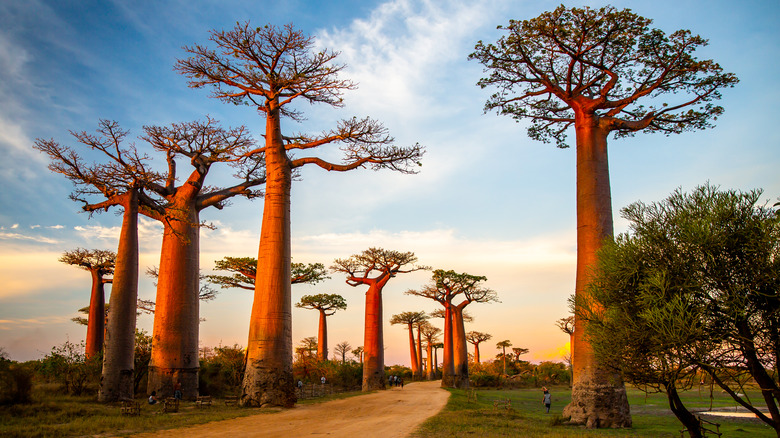Most Of The World's Vanilla Comes From This Country
According to Britannica, vanilla, scientifically known as genus vanilla, is a tropical climbing orchid plant. Their long stems bloom flowers that come in colors from light green, to yellow, to creamy white. Among them are the plant's fruits or "beans," the source of vanilla flavor popularly used in sweet treats like ice cream and chocolate. There are many different types of vanilla: Bourbon, Tahiti, and West Indian, to name a few. However, all species stem from one native to Central America, northern South America, and Mexico, where the Aztecs used it for centuries before it became popular in Europe.
Most of the world's vanilla comes from a country more than 10,000 miles away from its origins, where Atlas Obscura says the trade was built upon colonization and enslavement. The vanilla industry carries on its dark history as poverty, theft, and violence continue to run rampant among farmers.
Vanilla farming is a mystery
Around the globe, there are more than 110 different species of orchids. However, according to Atlas Obscura, vanilla is the only one that grows edible fruits. Once mature, the vanilla fruit, or "beans," extend to a length of eight inches. While the vanilla plant grows all along the equator, from the tropical parts of Latin America to Southeast Asia and West Africa, it thrives best in locations near the ocean, where conditions are humid yet not overtly hot. Vanilla also needs a dry season in order to be pollinated — a natural job that remains a mystery among vanilla farmers.
As Britannica explains, vanilla plants are so dainty that only a specific species of small Mexican bees and hummingbirds can pollinate them during the few hours that the plant flowers. No one has been able to figure out a way to naturally pollinate the plants in farm settings. Instead, small wooden needles are used to pollinate them manually — a key discovery that altered the course of the industry.
Vanilla is pollinated with a wooden needle
Being hermaphroditic, vanilla flowers have both male and female reproductive organs — making them perfectly capable of self-producing if it weren't for the thin membrane between them (per Atlas Obscura). The pollination issue has hindered the vanilla industry for most of its history. Until the 1840s, the plants were exclusively harvested from the forests in southeastern Mexico, where they grew naturally. But, in 1841, Edmond Albius, an enslaved 12-year-old boy living on an island known as Île de Bourbon, a French colony off the coast of Madagascar, discovered a way to pollinate the plants using a wooden needle.
By piercing the flower with a thin piece of wood, Albius discovered that he could use his fingers to move the membrane out of the way and press the vanilla flower's reproductive organs together. Despite being freed from slavery in 1848, Albius never received any money his revelation allowed. By the time he passed in 1880, France had taken his technique and began producing vanilla. It also spread to Mexico, supplying vanilla to all of the Americas thanks to his method.
Years later, in 1895, the French saw the financial opportunity and invaded Madagascar — an island perfectly conditioned to grow the crop, with around 2 million Malagasy people to do the hard labor for them.
Madagascar leads the world in producing vanilla
The climate in Madagascar was bound to be ideal for growing vanilla (via Atlas Obscura). However, what's made the island country a particularly special place for the crop is its two dry seasons per year — allowing for double the propagation. For many years, Madagascar supplied the European market with its vanilla, while Mexico took care of the Americas'. However, the combined effects of the Mexican Revolution and oil reservoirs have hampered the country's vanilla culture.
So to no surprise, Madagascar leads the world in vanilla production, supplying around 3,000 tons in 2020 alone, per the FAO. But, even though Madagascar is topping the charts in vanilla production, the second most expensive spice on the planet, Malagasy farmers don't seem to reap any of it. In fact, according to Bloomberg, they're paid a minimum wage of $0.18 per hour — that's 10 to 15 times lower than any other vanilla-producing country.



